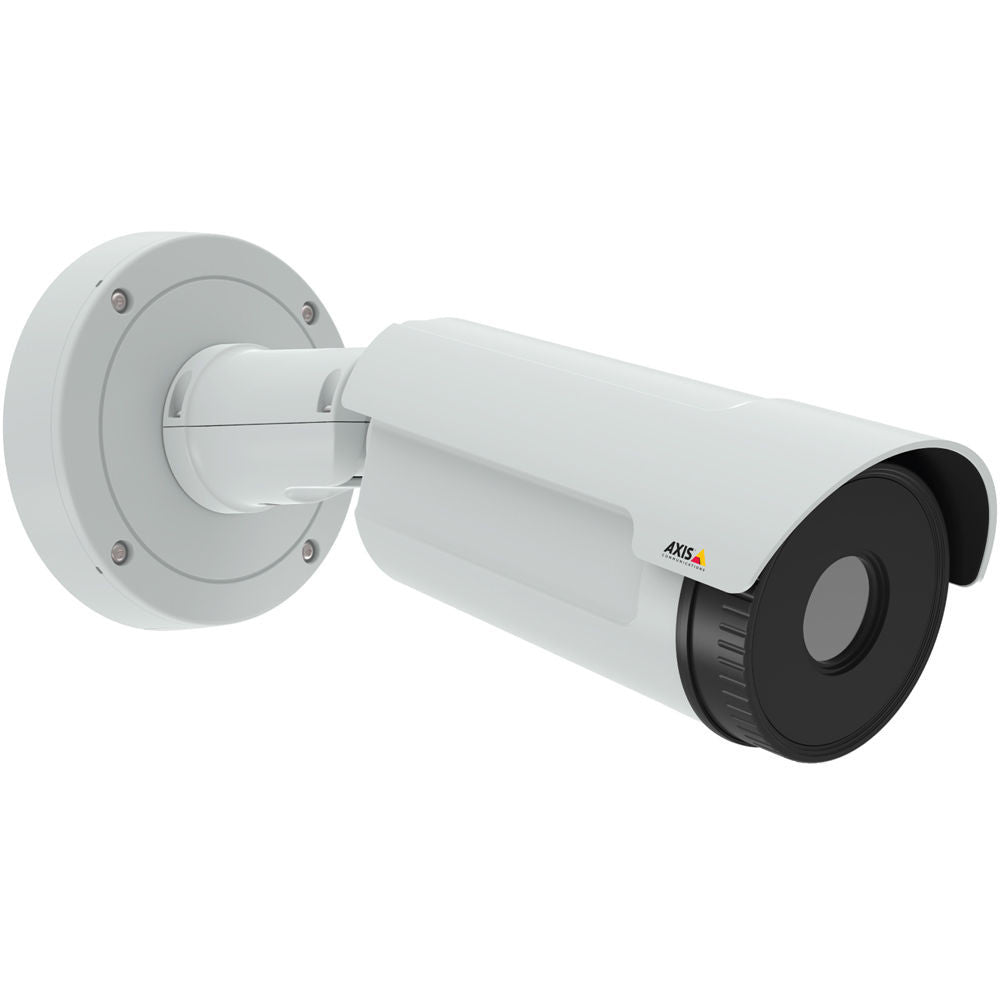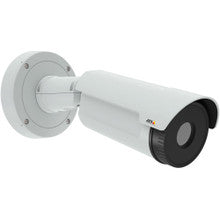AXIS Q1941-E (0789-001) Features
- Comes with 60mm Lens providing 30fps
- Powerful performance for video analytics via ACAP applications
- Outstanding image contrast gives reliable detection and fast verification
- Easy and quick to install outdoors
- 384x288 thermal detection
- Electronic Image Stabilization
- Axis Zipstream technology
AXIS Q1941-E Overview
AXIS Q1941-E is an affordable outdoor, bullet style, thermal camera with a built-in window heater for harsh weather conditions. A resolution of 384x288 and a range of lens alternatives (7 mm, 13 mm, 19 mm, 35 mm and 60 mm) make it possible to optimize detection performance to meet most requirements. It supports Electronic Image Stabilization that keeps the video smooth during vibrations, and Axis Zipstream that lowers bandwidth and storage requirements. Thanks to its powerful processor, AXIS Q1941-E has high capacity for running video analytics via AXIS Camera Application Platform (ACAP) and can use a range of third party applications. Thanks to its powerful processor, AXIS Q1941-E has high capacity for running video analytics via AXIS Camera Application Platform (ACAP) and can use a wide range of third party applications. The camera also offers a memory card slot for storing recordings locally. Since thermal cameras are less sensitive to problems with light conditions and shadows, they can achieve higher accuracy and less false alarms than conventional cameras in most applications. Thanks to a superb thermal image contrast, AXIS Q1941-E reliably detects and gives a fast verification of the situation, e.g. in perimetersurveillance. With five lens alternatives (7 mm, 13mm, 19 mm, 35 mm and 60 mm), the network camera can optimize detection performance to meet most application requirements. A thermal camera is mainly used for video analytics and detection in those restricted areas where no one should trespass or walk around. Based on these premises, the video shows no motion at all, unless an intruder is detected. Supporting Axis' Zipstream technology, AXIS Q1941-E filters out those areas with no motion, and it can focus on the parts of the image that are moving. This significantly reduces the bandwidth and storage required. Moreover, the Electronic Image Stabilization (EIS) helps the camera to provide a smooth live viewing when it is mounted on instable places and vibration can be perceived as an issue.






